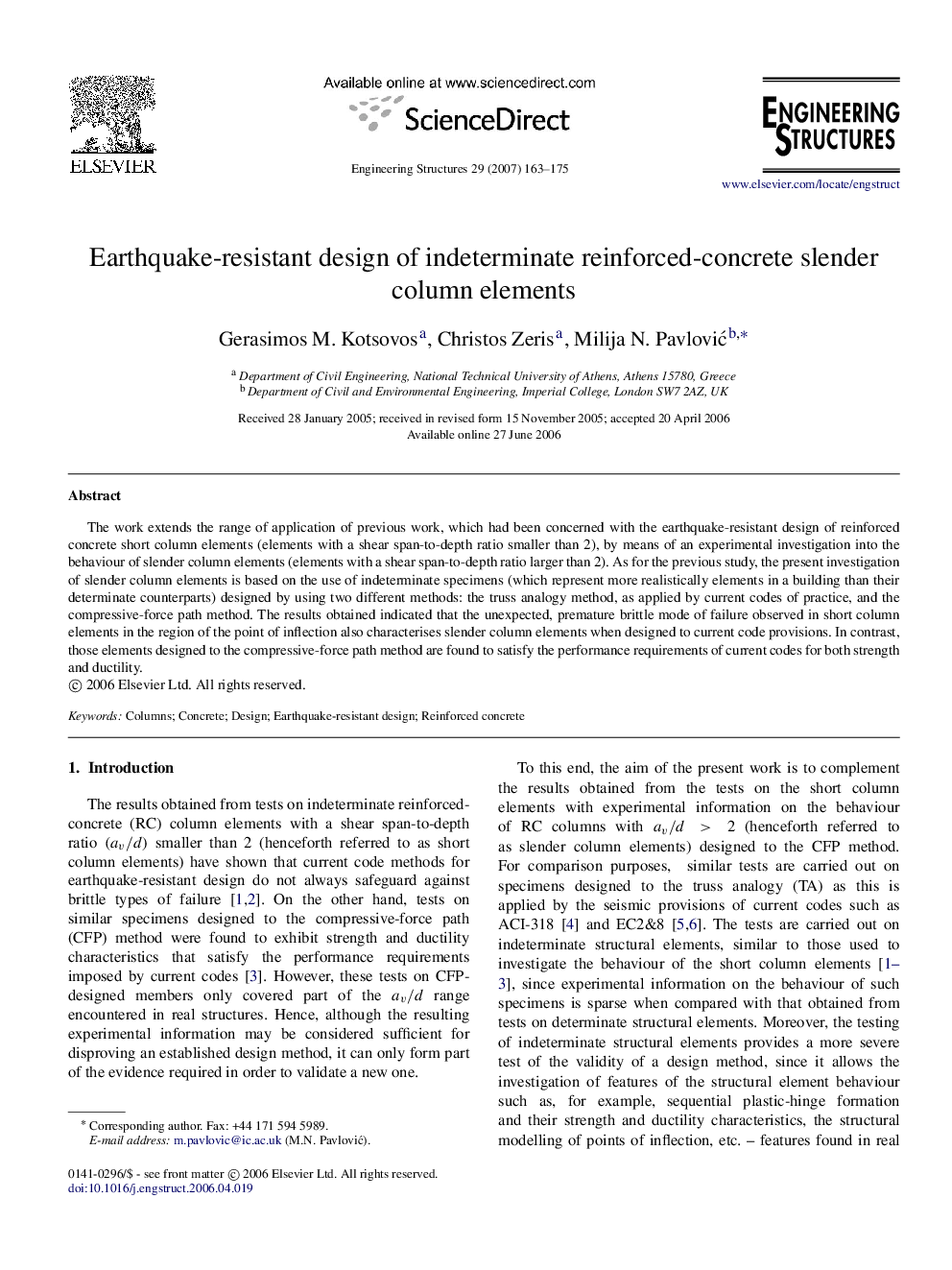| Article ID | Journal | Published Year | Pages | File Type |
|---|---|---|---|---|
| 269287 | Engineering Structures | 2007 | 13 Pages |
The work extends the range of application of previous work, which had been concerned with the earthquake-resistant design of reinforced concrete short column elements (elements with a shear span-to-depth ratio smaller than 2), by means of an experimental investigation into the behaviour of slender column elements (elements with a shear span-to-depth ratio larger than 2). As for the previous study, the present investigation of slender column elements is based on the use of indeterminate specimens (which represent more realistically elements in a building than their determinate counterparts) designed by using two different methods: the truss analogy method, as applied by current codes of practice, and the compressive-force path method. The results obtained indicated that the unexpected, premature brittle mode of failure observed in short column elements in the region of the point of inflection also characterises slender column elements when designed to current code provisions. In contrast, those elements designed to the compressive-force path method are found to satisfy the performance requirements of current codes for both strength and ductility.
